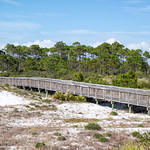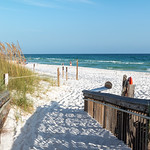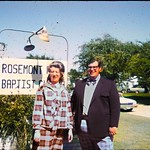FRIENDS OF THE MUSEUMS INC
FORT WALTON BEACH, FL

Friends of the Museums Inc. in Fort Walton Beach, Florida, is a non-profit organization dedicated to preserving and promoting the history and culture of the region. Established in 1998, the organization works closely with the City of Fort Walton Beach, the Fort Walton Beach Historical Society, the Emerald Coast Convention and Visitors Bureau, and other local organizations to promote and preserve the history and culture of Northwest Florida.
The Friends of the Museums Inc. works to engage the community in activities that will help to preserve and promote the culture and history of the region. This includes organizing educational programs, field trips, lectures, and other activities related to the history and culture of the area. The organization is also engaged in fundraising to help support activities and programs related to the preservation and promotion of local history and culture.
The Friends of the Museums Inc. also works to promote the region's arts and culture. This includes organizing art shows, music festivals and other events that celebrate the culture and history of Northwest Florida. The organization also works to increase public awareness of the area's history and culture. This includes creating exhibits, brochures, and other materials to help educate the public about the region's history and culture.
FRIENDS OF THE MUSEUMS INC is a Uncategorized or General Museum in FORT WALTON BEACH FL. US MID #8401200987
The museum is classed as GMU (Uncategorized or General Museums). It comes under American Alliance of Museums (AAM) region: Southeastern (Alabama, Arkansas, Florida, Georgia, Kentucky, Louisiana, Mississippi, North Carolina, South Carolina, Tennessee, Virginia, West Virginia).
Contact FRIENDS OF THE MUSEUMS INC
- website: friendsofthemuseums.org
FRIENDS OF THE MUSEUMS INC
139 MIRACLE STRIP PARKWAY SE
FORT WALTON BEACH
FL
32548
Disclaimer: please note this database is maintained by volunteers and whilst we endeavour to do our best, we cannot guarantee the accuracy of the listing.
If you notice any errors or omissions in the listing, please let us know in the comments section below.
Find more FORT WALTON BEACH FL Museums
What 3 Words
///loose.tilts.medallion. Near Fort Walton Beach, Florida
Map of FRIENDS OF THE MUSEUMS INC
FRIENDS OF THE MUSEUMS INC Information
| MID # | 8401200987 |
| Name | FRIENDS OF THE MUSEUMS INC |
| Alternate Name | |
| Classification | Uncategorized or General Museums, , Southeastern |
| Federal Employer Identification Number (EIN) | 593420895 |
| NTEECC | |
| Tax period of the latest return filed (YYYYMM) | 201212 |
| INCOME | 0 |
| REVENUE | 0 |
| LAT/LONG | 30.410506, -86.615937 |
| CODES | FIPS State Code: 12 FIPS County Code: 091 US Census Tract: 022600 US Census Block: 3029 |








![Louisiana Sunset Pensacola Florida inter-coastal sunset over the water. Since the coastline represented the national border, and commerce of the time was chiefly by water, the fledgling United States government established a degree of national control over it. Inland transportation to supply the coasting trade at the time was less known and virtually undeveloped, but when new lands and their favorable river systems were added with the Northwest Territory in 1787, the Northwest Ordinance established a radically new and free national policy for their development and transportation use.[1]
Over time, internal improvements of natural coastal and inland waterways would develop into the Great Loop, which allows for waterborne circumnavigation of the eastern continental United States, using minimal ocean travel, with the Intracoastal Waterway providing its eastern end. In 1808, the first federal government report on existing, possible, and likely avenues of transportation improvement was presented; it included much of the distance where the ICW now traverses the Atlantic coast. At the request of the Senate, Treasury Secretary Albert Gallatin presented an overall plan for future transportation developments of national importance and scope.[2] Along with inland east–west improvements, Gallatin's north–south improvements included the following:[3]
The map of the United States will show that they possess a tide water inland navigation, secure from storms and enemies, and which, from Massachusetts to the southern extremity of Georgia, is principally, if not solely, interrupted by four necks of land. These are the Isthmus of Barnstable, that part of New Jersey which extends from the Raritan to the Delaware, the peninsula between the Delaware and the Chesapeake, and that low and marshy tract which divides the Chesapeake from Albemarle Sound. ... Should this great work, the expense of which, as will hereafter be shown, is estimated at about three millions of dollars, be accomplished, a sea vessel entering the first canal in the harbor of Boston would, through the bay of Rhode Island, Long Island Sound, and the harbor of New York, reach Brunswick on the Raritan; thence pass through the second canal to Trenton on the Delaware, down that river to Christiana or Newcastle, and through the third canal to Elk River and the Chesapeake, whence, sailing down that bay and up Elizabeth River, it would, through the fourth canal, enter the Albemarle Sound, and by Pamlico, Core, and Bogue sounds, reach Beaufort and Swansboro in North Carolina. From the last-mentioned place, the inland navigation, through Stumpy and Toomer's sounds, is continued until a diminished draught of water, and by cutting two low and narrow necks, not exceeding three miles together, to Cape Fear River, and thence by an open but short and direct run along the coast is reached that chain of islands between which and the main the inland navigation is continued, to St. Marys along the coast of South Carolina and Georgia. It is unnecessary to add any comments on the utility of the work, in peace or war, for the transportation of merchandise or the conveyance of persons.
While Gallatin discussed the details of engineering, construction, and costs, including the national benefits to accrue from lowered transportation costs between domestic and international markets, his full $20 million, 10-year plan was never approved. That is not to say his plan was never implemented, however, for with experience in the War of 1812 shortly thereafter and the attendant British blockade, the continued need for such facility was soon highlighted. Since Gallatin had based his proposals on the known advantageous natural geographic features of the country, many of his proposals became the locations of navigation improvements that were surveyed, authorized, and constructed starting with the 1824 General Survey Act and the first of many pieces of rivers and harbors legislation,[4] as well by individual state-built improvements.
Since these 1824 acts, the United States Army Corps of Engineers (USACE) has responsibility for navigation waterway improvements and maintenance. All four proposed sections of Gallatin's intracoastal plan were eventually built; the Delaware and Raritan Canal was later abandoned for a better alternative, but the Cape Cod Canal remains in operation, and the Delaware and the Dismal Swamp portions still form part of the larger present-day Intracoastal Waterway. Wikipedia](https://live.staticflickr.com/65535/53305702203_9923593813_q.jpg)


